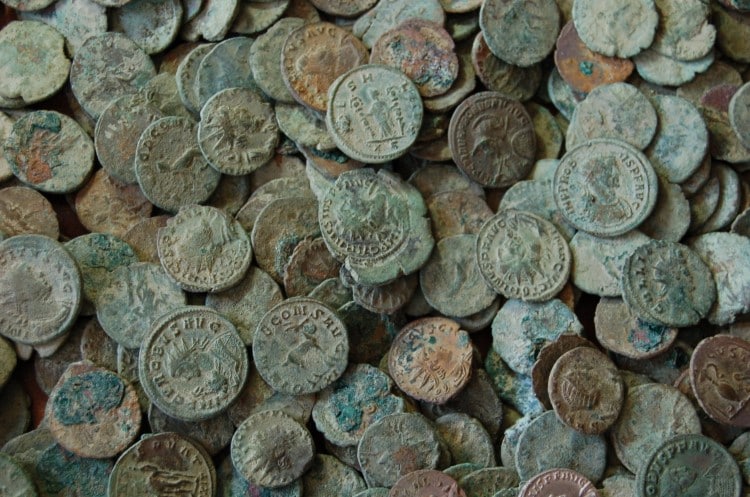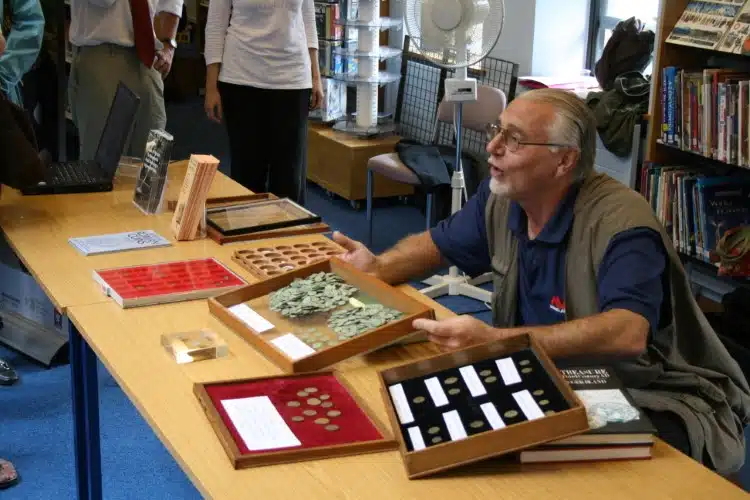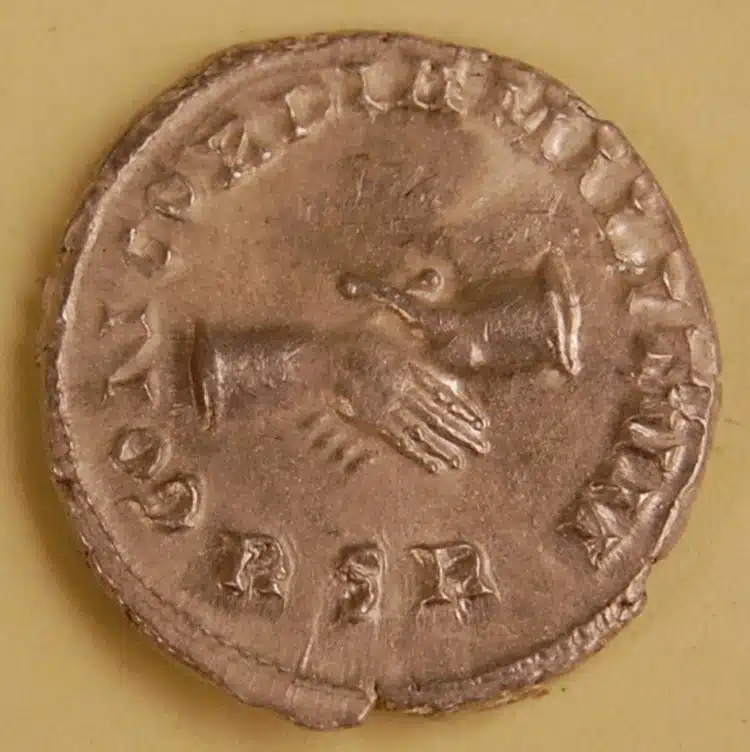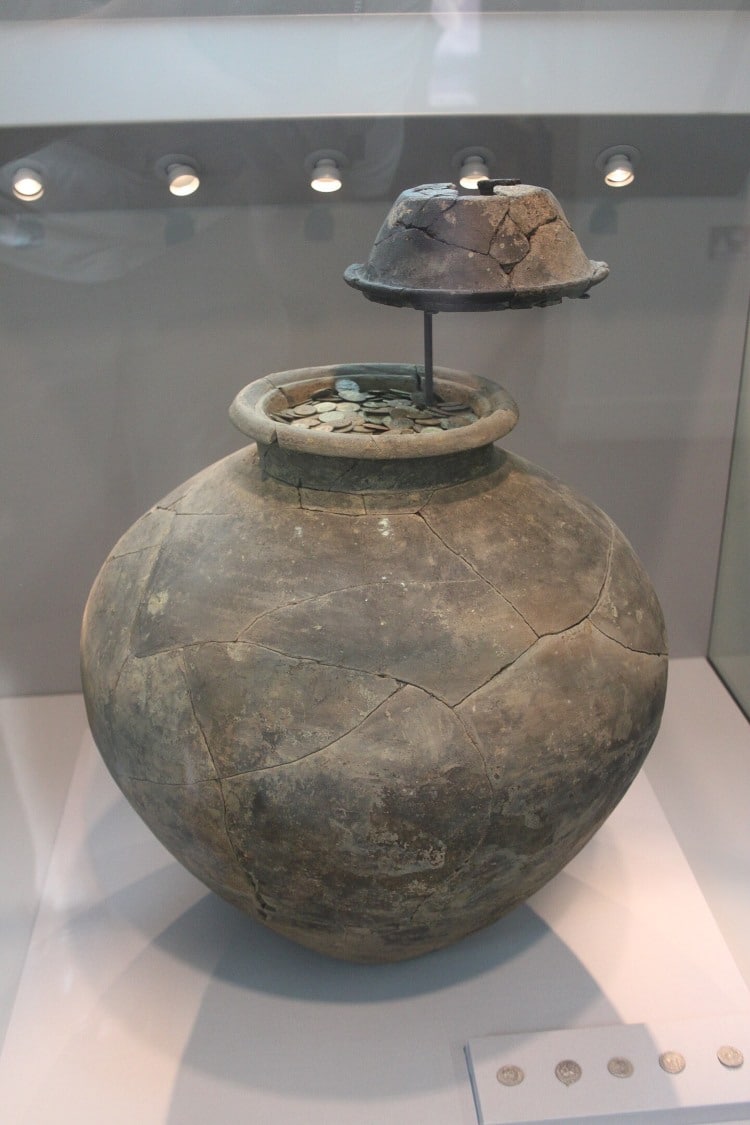The UK’sPortable Antiquities Schemeis set up to incentivize the public to report archeological finds and Crisp took full advantage.
County archeologists excavated the enormous vase, which would have been used for food storage.
It weighed 350 pounds and contained 52,503 coins dating from 253 to 305 CE.

Photo: Portable Antiquities Scheme viaWikimedia Commons(CC BY-SA 2.0)
After the excavation, the coins were sent to the British Museum to be cleaned and recorded.
It took six weeks to dry out and stabilize all the coins, which were mainly bronze.
Five rare silver coins calleddenariiwere also in the hoard.

Dave Crisp at Frome Library on 22 July 2010, holding a tray of coins from his find (Photo: Portable Antiquities Scheme viaWikimedia Commons,CC BY-SA 2.0)
They are now called theFrome Hoard, after the location where they were found.
In this case, Dave Crisp.
However, the actually sum, while still significant, was a fair bit lower.

Carausius silver denarius from the Frome Hoard. (Photo: Portable Antiquities Scheme viaWikimedia Commons,CC BY-SA 2.0)
In October 2010, the country’s Treasure Valuation Committee valued the hoard at $505,995 (320,250).
In 2011, they were purchased by the Museum of Somerset and placed on permanent display.
Carausius silver denarius from the Frome Hoard.

The Frome Hoard at the Museum of Somerset (Photo: Rodw viaWikimedia Commons,CC BY-SA 3.0)